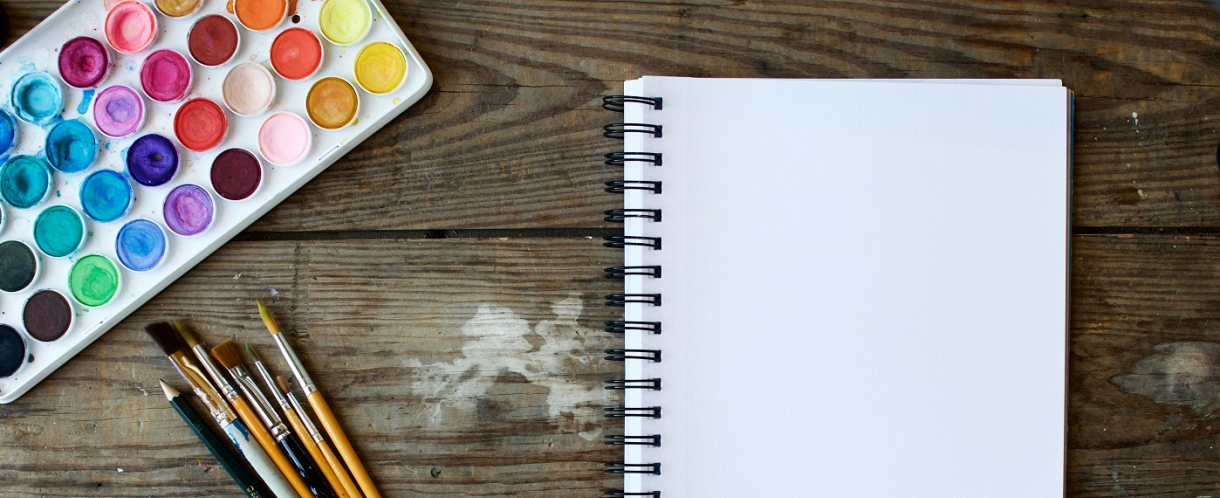
Dream of pursuing a creative career, but written it off as a self-indulgent fantasy? Convinced it would mean a pay cut too far, or worried you'd end up ruining a much-loved hobby? Katie explores why following the call of your right-brain may not be as risky as it can sometimes appear, and shares (with real-world examples) a roadmap to making it a reality.
Do you dream of 'doing something creative' in your new career?
Perhaps you'd love to work in a bakery, be a landscape gardener, paint canvases all day, or animate films?
By ‘creative’, I mean the thing you’d love to do. The route you’d follow if there was no risk of failure. But for many of us, that creative path seems closed off by a big pile of doubt and uncertainty.
When we asked you, our audience, what challenges hold you back from moving into a creative career, this is what you said:
“My current career pays the bills. Looking at creative careers it always seems I'd have to take a pay cut I couldn't afford.”
“Finding time to get started while still working full-time.”
“Repositioning myself as a creative and not an office worker, and working to gain creative skills that I've neglected over the years.”
“How to make money as an artist.”
“Fear that I won’t be able to earn a living, and not knowing exactly what I want to do.”
20.73% of career changers say that the financial side of a shift is their biggest challenge.
21.93% say that skills and experience are what’s holding them back.
So these concerns aren’t unique to people dreaming of creative careers, but they do tend to get extra-loud when we’re thinking about this kind of a shift.
However compelling our fears, though, there's often a little voice in our heads that won’t be silenced. It says our ‘creativity’ (whatever form that takes for us) is important. It’s the key to a long-term shift we genuinely love. After all, isn’t fulfilling work what we’re looking for?
In my case, I love to paint, write and make things.
I’ve worked through every aptitude test, personality type and career change book – looking for the secret that can turn these into stable employment. If I loved mathematical formulae, I could make that my job. With a good salary, and all the benefits. Instead, my creative interests feel like the short straw of career shifting. The route to making them successful is slow, foggy and rocky. It would be so much easier to stay on the safe path of a regular job… and feel unfulfilled.
Sound familiar?
If so, this article provides a road map to a viable creative career shift, based on the experiences of those who have made it happen – members of the Careershifters community who've been where you are now, and who've shifted into creative careers (without destroying their finances!).
We can break this shift into three stages:
- Exploring (what’s my creative shift?)
- Reflecting (is this a hobby or a new career?)
- Building (how do I build my creative career and keep a stable income?)
Let’s start with the first step...
Exploring: how to find your creative shift

The urge to do 'something creative' can feel too vague to action. So how do we find a specific idea and test it out? Here are some methods to use before you quit your job:
Consider a simple change
Not all creative shifts involve chucking out everything you’ve done in your career so far, and running away to learn patisserie (unless that’s the vision you have in mind!).
Instead, it could start with a simple change in context.
For example, taking your current skills to a more artistic setting, such as managing finances for a gallery, or leading marketing campaigns for a theatre. Bear in mind, shifting into the arts is often lower paid and less stable than the corporate sector. But if you’re looking for more work flexibility, the trade might suit your circumstances.
Of course, you don’t have to work in the arts to feel more 'creative'. A more subtle culture shift could suit you well; for example, from an environment that feels restrictive, to one that gives you more energy and freedom.
Thea Partridge wanted to shift out of her job at a social media marketing agency. She started freelancing as a marketing consultant, alongside pursuing her passion for sculpting. Her interest in sculpture led her to a rewarding new job that uses her marketing skills:
 “I decided I didn't want to sell all my original sculptures (each one takes so long to create, I find I get personally attached to them). So I went to investigate 3D printing them at a local event. It was there that I got talking to an entrepreneur who was in charge of a medtech start-up.
“I decided I didn't want to sell all my original sculptures (each one takes so long to create, I find I get personally attached to them). So I went to investigate 3D printing them at a local event. It was there that I got talking to an entrepreneur who was in charge of a medtech start-up.
He helped me to explore 3D printing my sculptures. In return, I offered his start-up marketing advice and guidance. A year later, he offered me a role as Communications Director.
Now, I'm working for a meaningful cause, with a passionate entrepreneur who has taught me many new skills – things like the product invention process and securing investment.
He also encourages me to pursue sculpting, so I'm free to be as creative as I like.”
But what if you can’t stand the idea of doing the same type of work as before?
What if you need a complete change, but haven’t yet found the right creative activity to kick-start your shift?
Then, we need to explore further...
Find your creative activity

Many creative shifters start without knowing what their future job title will be. They use their free time to test different creative activities, until they find the right one to spark their career change. This is inevitably a process of trial and error:
“Because I wanted to be more creative, I'd started seeking out hobbies that I would enjoy. I started with sewing classes, but I'd always liked the idea of woodworking, even though I'd never tried it before.” – Honor Dalrymple (shifted from civil engineering to furniture making)
“I'd long felt a desire to work with my hands and become skilled in a handcraft. I loved many different creative areas, so I signed up to various part-time courses, including a jewellery course and a millinery-design course at Kensington and Chelsea College in London. I also took on a short placement in a print studio.” – Joanne Edwards (shifted from fashion to millinery)
Remember, you don’t have to pay for a course to explore your options. There are plenty of free learning opportunities available:
“We live in the best time ever for learning new things. Almost anything you need to know can be found on YouTube, or the internet in general. Find it and practise it.” – George Winks (shifted from graphic design to furniture)
It’s easy to dismiss this creative exploration as a luxury or a waste of time. Especially when “What am I doing with my career?” hangs so heavily overhead. But we have to allow ourselves this phase. Otherwise how can we progress? How can we find what specific creative skill is calling us? It doesn’t matter what you start with, as long as you start.
In my own experience, I found that I already knew what creative activity I wanted to pursue; I just had to give myself permission to treat it professionally.
Pick up lost hobbies
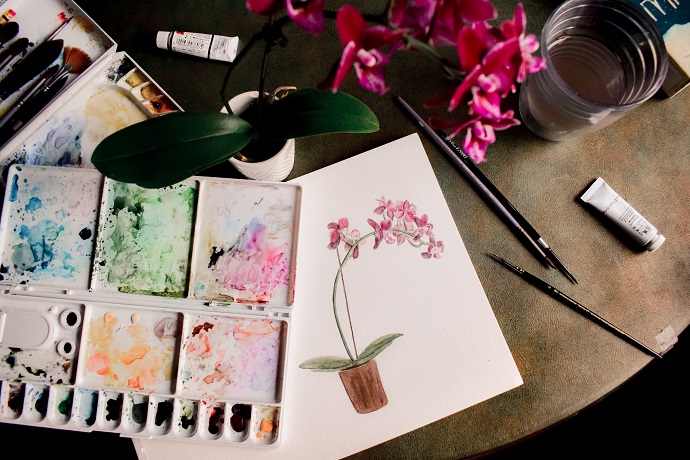
Do you already know what your creative shift is? Your inner eight year old might. It could be a skill that you put aside somewhere along the education / career ladder.
For example, I started painting again at the start of my career change process, for the first time in about ten years (I stopped when I went to university instead of art school).
I knew that painting canvases wasn’t an immediate job solution. But it was a way of ‘defrosting’. I was reclaiming something I loved but hadn’t made time to do in years.
I committed to painting regularly – squeezing in an hour each day. This reminded me that I was more than my job title or industry. I was on a quest to remember my other talents, and see what I could do with them.
From a ‘hobby’ start, I then got my first commission. This led to setting up an online shop, and (gradually) selling to customers across the UK.
My art business is slowly growing. It might become my main job. But that's not the only point. I now feel much more like myself.
Plus, I’ve gained the skills to shift into many possible industries. Product development, customer service, business management, budgeting – I've been paid to learn these. It’s as valid to have gained these skills from my own business as through a regular job (plus I can tick the ‘uses own initiative’ / ‘manages own deadlines’ boxes). I’m a more interesting job candidate than I’ve ever been. All from trusting the instinct to pick up my brushes again.
Commit to doing it
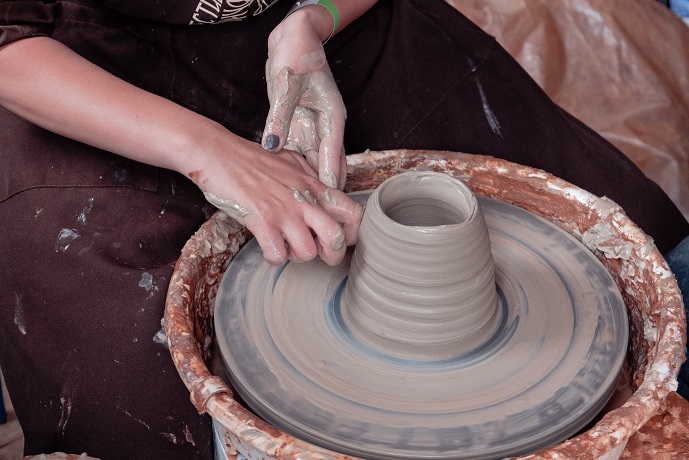
So far, so fun.
But there’s a harsh reality to creative careers. Nobody is going to give you permission (except you) that this can work.
You have to trust that you’ll make something worthwhile, and put the time in up front. With no guarantee of success.
You can’t have a novel published unless you write it. You can’t sell your artisan soap unless you craft some. You have to make the product before you can sell it.
This is also true if you’re shifting into a service (like photography, interior design, or website building). You have to make a portfolio, or find a way of showcasing your skills. Even if that’s giving yourself hypothetical projects to work on.
Sounds obvious. But are you finding time to actually do this, or just thinking about it?
Whatever our activity, we have to commit to doing it. Consistently. As a worthy use of our time. Rather than a special reward (when every other to-do list task is complete). We need this regular exposure to work out whether we really want to make this creative task part of our working life. Or prefer it as a hobby.
Make time and defend it

If you’re looking to find more time, start noticing your habits. Look for the gaps where you can do your creative task, and defend that time.
Can you spot the points where you’re drawn to scrolling your phone, or checking social media? Is it possible to redirect these minutes towards your creativity (taking out a notebook instead)?
Can you try a simple change in routine? For example, setting a rule with your family that you have 20 uninterrupted minutes at a particular point in the day?
Remember, you have to treat yourself as a professional before anyone else can.
This exploring phase can feel overwhelming to start, and easy to get lost in. So how do we focus our efforts, around our job and other commitments?
Action points for the 'Exploring' stage:
- Identify one learning activity for a creative skill you’re interested in. As well as YouTube, other options include Coursera (which has free options). Skillshare (which has a two-week free trial) and the Open University’s free Open Learn platform.
- Find one person who is doing your creative work professionally. A quick bit of research can dig up online festivals, open studios and one-day workshops. Find one opportunity where you can practise the creative skill you’re interested in, in the company of a professional. Ask them questions!
- Make regular time to practise your creative activity. Start with a simple challenge. For example: I will write for ten minutes each day at 7.00 a.m. for three weeks. Pick something that feels achievable around your job and commitments (you can build up later). Tell someone who can hold you to account.
- Swap excuses for questions (“I don’t have the time” becomes “How can I make a small amount of time?”). Our creativity can be crushed to death by perfectly reasonable excuses. But if you turn the excuse into a question, there’s probably an answer.
As you start to treat your creative outlet seriously, the doubts will grow.
You will become more aware of the gulf between where you are now, and where you want to be. The route will look steep, and there’s always a handy reason not to continue: “I’m not good enough”, “this is a waste of time” or “I don’t have enough talent/experience/money to turn this into a career”.
So, how do we replace these doubts with more useful thoughts? How do we work out whether to take things further?
Reflecting: how to tell the difference between a hobby and a new career
Stop worrying about talent
There isn’t a single rule that can tell you whether you should go professional or not.
You might think that ‘talent’ is the dividing line. It isn’t.
When you go to a gallery, do you like all the paintings? Talent is subjective.
When you read about someone who sells cakes, makes jewellery, opened a bookshop: is their business running solely on talent?
Being 'good' at something might help you get started. But other skills are more vital for long-term success.
Perseverance. Marketing. Budgeting. Connecting. Goal-setting. As a career changer, you’re likely to have learnt these skills in your work history already. You're in a position of advantage.
This isn’t to brush your concerns under the carpet. Of course we’re going to ask ourselves if we’re good enough. It’s scary to start doing something new. To leave what we know. To set up our own creative business, or start at the bottom in a new industry.
But the empowered question to ask is:
Why do you want to shift into creative work?

As with any career change, it’s important to understand your why. Think of this as the mission statement that keeps you focused.
For example, I want to do creative work because I love to take a pile of materials and create something new. Something that’s vibrant, expressive, and brings other people value. This energises me. It connects my inner life to that of others. It’s my way of making a useful contribution.
This keeps me on track: something either fits my ‘why’ or it doesn’t.
Writing an article (like this one) and painting a canvas may seem like very different forms of work. But they both fit the ‘why’ given above. I can find various forms of work for this ‘why’.
This also helps to switch off the “oversaturated” fear. I don’t have to swim in the busy pool. I just focus on the clients, organisations and customers who share my ‘why’. It’s a small and friendly place to start.
But alongside our ‘why’, we also have to be honest with ourselves about our expectations:
Does your creative shift pass the holiday resort test?

Imagine you’re at a holiday resort. You’ve had a lovely relaxing time, and you’re wishing you could just stay. It would be so easy to move out here permanently – where the pace is slower, the activities are fun, and you’re free of your usual cares.
But do you really want to be at that resort through the rest of the year?
When it’s empty, in awful weather, with no company, and no guarantee the next season will be better? When it’s entirely work, not leisure.
Maybe that’s the challenge you’re looking for… or perhaps you prefer to enjoy it as a tourist.
We can apply this to creative careers:
You’re not choosing it for when it’s fun. When you’re doing that activity you love, business is thriving and you’re feeling happy and fulfilled.
You’re choosing it for when it's hard. Because you’re willing to be there through the problems. Whatever those may be. Whether that’s struggling to find clients, overcoming the uncertainty of a contract falling through, learning a new skill from novice to expert, juggling several jobs, or having no guaranteed money next month. The struggle will be 99% of the time.
Ask yourself: do you want to live there?
Your creative shift is not a peaceful, easygoing alternative to your current job. All the hard and boring bits are still there (in a different form). This is the reality across the Careershifters community:
“It's financially very tough in the early years and beyond – everything really does take longer than you anticipate.” – Joanne Edwards
“Mostly it's just taken a very long time to get to where I am now, and there's a long way to go still.” – George Winks
In my own shift, I’ve berated myself for 'not being successful fast enough'. I thought I could make a clean jump, from fundraiser to artist and writer. One shift. Sorted.
Frankly, this was just naive.
Who makes a full-time income from creative work straight away? Nobody.
Whether you’re learning a new trade, or setting up your own business – it’s going to take time. It’s more accurate to view this route as a series of mini-shifts.
During that time, you’re going to feel scared, worthless and uncertain. You’re not getting immediate validation that you’re doing the right thing. So the high achiever in you will start screaming to pull the plug. It takes a lot of inner resources to keep going, along with a healthy dose of realism, and a financial plan.
Action points for the 'Reflecting' stage:
- Set your why: Why do you want to do creative work?
Write it down. Then ask ‘why’ again until you hit the root (try three rounds).
This is the statement you need to stick above your desk, or anywhere you can see it regularly. It will help you stay focused, and pick a suitable direction.
Set a timer for two minutes and bullet point as many kinds of work as you can, that suit the ‘why’ you’ve written. Start with the obvious, and keep going. The aim of this is to start thinking more widely and imaginatively about your options (and dispel the "I’ll be a starving artist in the garret" fear).
What excites you within that list? What ones would you like to do in the long term, and what feels most achievable to start with in the short term?
How does your ‘why’ solve someone else’s problem? Find one contact who your ‘why’ is useful for.
- Do a Risk Assessment
Write out all the problems you can think of for your creative shift. What business skills will you have to learn? What money uncertainties would you have? What could go wrong?
List each of the dangers that come to mind, and who will be affected. Then rank the likelihood of this occurring, out of 10. What steps can you take to reduce each risk?
For example: I will not earn enough in my first month as a freelance illustrator, which will mean I have to rely on my partner’s salary (8/10).
Could become: I know I need to have four clients per month to cover my costs. I will arrange three months' worth of freelance work before I finish my job.
Consider the solutions you have written. Those will be your job. Are you willing to have that job? Unless you’re screaming “No!”, the only way to know for sure is to try.
So how do we make taking action as smooth as possible?
Building: how to build a stable creative income

There are many ways to build your creative career change, without burning bridges or risking your finances. You can create a work structure that suits your needs and goals.
Here are methods used by members of the Careershifters community, to help you find what’s best for you:
Test and build your buffer (before leaving your job)
Nathan Walker shifted into wedding photography, after years in the science sector. He set up the foundations for his shift whilst in his previous job:
 “I negotiated a four-day working week in order to spend one day a week focusing on my passion for photography, in the hope that I could serve people well and make a profit.
“I negotiated a four-day working week in order to spend one day a week focusing on my passion for photography, in the hope that I could serve people well and make a profit.
“I did this to test the water; to answer the question: 'If I pursue photography as more than a hobby, would I still enjoy it?' The more photographic work I did, the more I began to realise that it was something that I wanted to do a lot more of.
“I sat down with my wife and we made a plan together to see us through one year after leaving the day job. We set a target of the minimum number of weddings that I needed to book in the first year to become viable.”
After leaving his job, Nathan’s plans for that first year were affected by the COVID-19 pandemic. But he used his back-up plan to tide him over, until wedding bookings resumed:
“We saved a financial buffer to last one year based on a worst-case scenario that assumed I wouldn't get any bookings during my start-up year.”
Nathan’s route was to test, save and then make a clean break. This was influenced by his desire to work for himself:
“I wanted to become self-employed, so that I could pursue something that I was passionate about and have the freedom to create my own opportunities.”
But this isn’t the only path to a successful shift. You can keep your job for a longer period, whilst progressing your creative shift alongside it.
Work part-time as you build your creative business
After a career in investment banking, Lucy Houle wanted to find a work mix with better work–life balance and creative fulfilment.
She shifted into working as a school secretary. At the same time, she set up her own business making luxury oilskin tote bags and accessories. She used her free time to build her business, until juggling both roles became unmanageable:
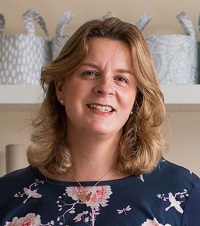 “The business was growing and growing, and I was getting up earlier and earlier every morning to make tote bags before I went to work. I thought to myself, 'This is just too much. Do I continue with my school job and give up my business, or shall I go for it?'
“The business was growing and growing, and I was getting up earlier and earlier every morning to make tote bags before I went to work. I thought to myself, 'This is just too much. Do I continue with my school job and give up my business, or shall I go for it?'
“I decided to take the leap of faith and the rest, as they say, is history!
“Perhaps my business has not grown as quickly as it could have. However, a business associate said to me that it's growing organically, which is likely the best way to succeed.”
It’s important to remember that your creative ‘success’ isn’t measured by how quickly you can quit your other work. There’s a range of benefits (beyond financial) to keeping a job alongside.
For example, Camille Deniau’s part-time job at Google benefited her creative work (Project Roots):
 “Part-time employment is really working out for me, as it allows me to structure my life and still maintain a dynamic social and professional network. The role is also very interesting, so that helps!
“Part-time employment is really working out for me, as it allows me to structure my life and still maintain a dynamic social and professional network. The role is also very interesting, so that helps!
“It felt important to have a side job to reduce stress and feel empowered when starting a business, instead of being overrun by the financial burden. I plan to progressively reduce the amount of days worked as Project Roots sales increase.”
But how do you manage the workload, without your creative work slipping to the bottom of the priority pile?
Set clear and achievable goals for your creative work
It's crucial to clearly define your goals when you're juggling different types of work. So you can set priorities for your remaining time, stay focused, and make empowered decisions. For Camille, this came through coaching:
“I can’t recommend coaching enough; it made the difference for me. Without this year of working on my purpose, my saboteur voices and building my project, I wouldn't have had the clarity and confidence I had when making the shift.”
With a bit of internet research, you can find support that suits your needs. At the start of my own shift, I was able to receive free coaching through The Young Women’s Trust. If your creative shift involves starting a business, there may be free support available.
Joanne Edwards found help for her shift into millinery through Enterprise Nation and The Prince’s Trust:
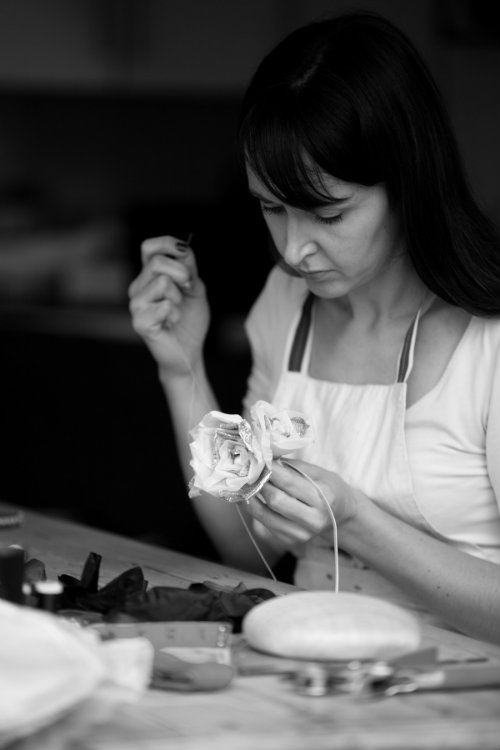 “I enrolled on a short 'start your own business' course and attended networking events, meeting others in a similar position through Enterprise Nation.
“I enrolled on a short 'start your own business' course and attended networking events, meeting others in a similar position through Enterprise Nation.
“I wanted to find a mentor to help me navigate my ideas and keep me accountable, so I signed up to The Prince's Trust which, amongst other things, allows you to meet with a volunteer. That has been a huge support and for me, something which has perhaps made all the difference.”
But we can also use the contacts we already have to progress our creative shift:
Use your connections
Your perfect creative job may never come up as a traditional listing. But you can make it up. Whether that’s through going self-employed, setting up a business, or networking into your dream industry. Don’t underestimate the work that can come through word of mouth:
“My first clients were musicians, colleagues and authors from the publishing house I worked at before.” – Luminita Ciobanu (shifted from music publishing to website design and development)
A useful place to start is by making an inventory of the connection methods you have already:
“I drew on my network, updated my LinkedIn, met a lot of people for coffee, asked for advice, and told as many people as possible what I was looking to do and achieve.” – Catherine Allison (shifted from marketing to a creative career portfolio)
Whatever your creative career route is, you need to be proactive. The more you go out and look for opportunities, the more easily they can find you.
Choose a work structure that suits you

It’s really important to be honest with yourself about what work structure suits you. Some people thrive being self-employed. But that way of working doesn’t suit everyone (and that’s OK!).
Are you someone who likes variety in their week? Then combining your own business with a part-time job might be the winning option for you.
Would you panic without a regular pay cheque? If so, you may do your best creative work in one day per week (and four days of income security). This isn’t a failing; it leaves you space to focus on your creativity by removing the fear.
The most important thing is to pick the route that feels right for you. What’s going to be your best way to get started? You can always change it later.
Action points for the 'Building' stage:
- Decide what way of working will allow you to build your creative career. Look at the solutions that have come up in your Risk Assessment. What form of work does this suggest to you? What’s one action you can take on this right now?
- Consider the contacts you’ve gained from your work so far. Who are three people it would be useful to talk to?
- How can your creativity solve someone else’s problem? This applies whether you’re looking for a job, or marketing a service. It applies for products, even if they seem like they don’t meet an ‘obvious’ need. For example, a painting solves the problem of a bare wall, a birthday gift, preserving a memory, and more; a poem solves an anniversary gift, a speech, a journal cover. Talk to people you know, look at what sells, suss out what people need. Where can your creativity offer a solution?
- If you’re starting a business, make use of the support in your area. This could be as simple as joining a networking group with other local businesses. If you’re struggling with a problem or knowledge gap, tap into free resources online. As well as Enterprise Nation, Natwest has a Business Builder course, Holly & Co has an advice hub for small businesses, edX has business modules, and Etsy has an online handbook.
- Stick with your creative idea until you earn your first £100 / $100. Don’t give up too quickly – you need time to work out how it’s going, what you can improve or make easier, and what to change.
- Write an income booster list. Write out all the ways you could make £100 / $100, from your skills and experience so far. Whether that’s using skills from your past work, selling household items, offering tuition – whatever! This is your back-up list. It reminds you that, if money feels tight, you have ways to generate some quick relief.
But what if it doesn’t work out?

Heading off on any new career route is exposing. But for a creative career, it’s easy to feel paralysed by extra pressure: What if I can’t make a living? What if it destroys my hobby? What if I’m not the right personality type to run a business? What if I fail?
But we can replace these fears with facts:
You’re allowed to change course
The purpose of our career shift is not to make money from our passions. That puts our career under crippling pressure – “If this fails I'll be miserable forever”. Who can thrive under that burden?
Instead, we're shifting to have a fulfilling and rewarding career that gives us the life we want.
We might find this in a creative career. But that’s not our only route. It could lead us to another direction entirely. For example, Rebecca Fennelly shifted from being a professional dancer to working in tech:
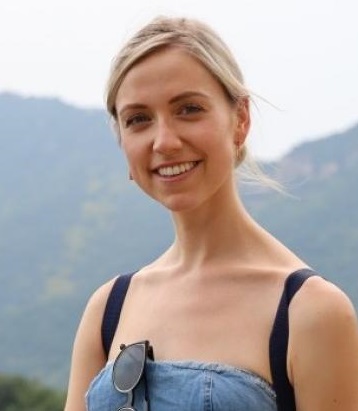 “I’d reached a point in life where I craved a little more stability but also really wanted something fresh and exciting to get my teeth into.
“I’d reached a point in life where I craved a little more stability but also really wanted something fresh and exciting to get my teeth into.
“Performing is and always will be a huge passion of mine. For me, the buzz of being on stage and performing for an audience is such a joy, but the upsides to the career change outweigh that for me.
“I have more time to spend with my friends and family in the evenings and weekends, and my shift has inspired me to build a long and happy career for myself. It feels like I have a new lease of life.”
It’s this “new lease of life” we’re aiming for. As long as we’re finding that, our career shift is a success.
Better to start than to stay stuck
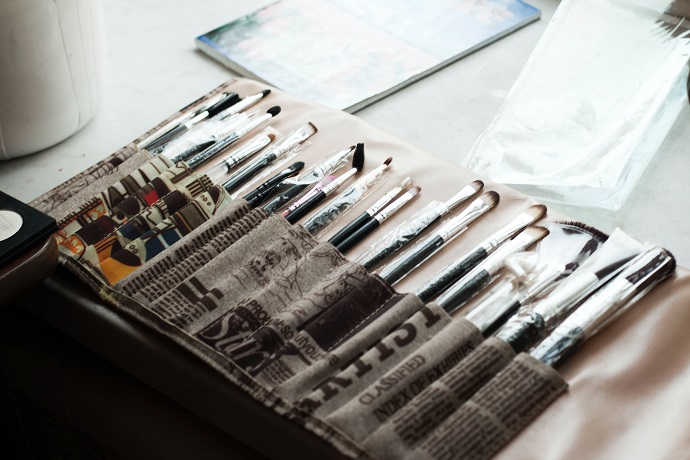
There were lots of reasons why I stayed in my old job.
Despite knowing I wanted to make a creative career shift. I read articles, and stayed put. Because I was afraid of failing.
Now I’m here, I wish I could pass a note back. There is no outright ‘failing’.
I might continue to grow my creative business. Or it might lead me to another job. Either way, I’ll be in a more fulfilling and rewarding place than the one I left. Simply because I know myself better.
If the creative struggles outweigh the rewards, I’ll shift again. If it’s no longer serving my needs, I’ll leave. I can do this now. I’ve got my agency back. Whatever happens, I’m no longer stuck.
But for now, my days are surrounded by the things I make. This article, the pile of canvases by my desk, the orders I shipped out this morning. I could have been doing this all along. Even in little spare pockets of time around my old job.
All it took was a little step. Just the confidence to start.
So where are you going to start with your creative career shift? Let me know in the comments below.





